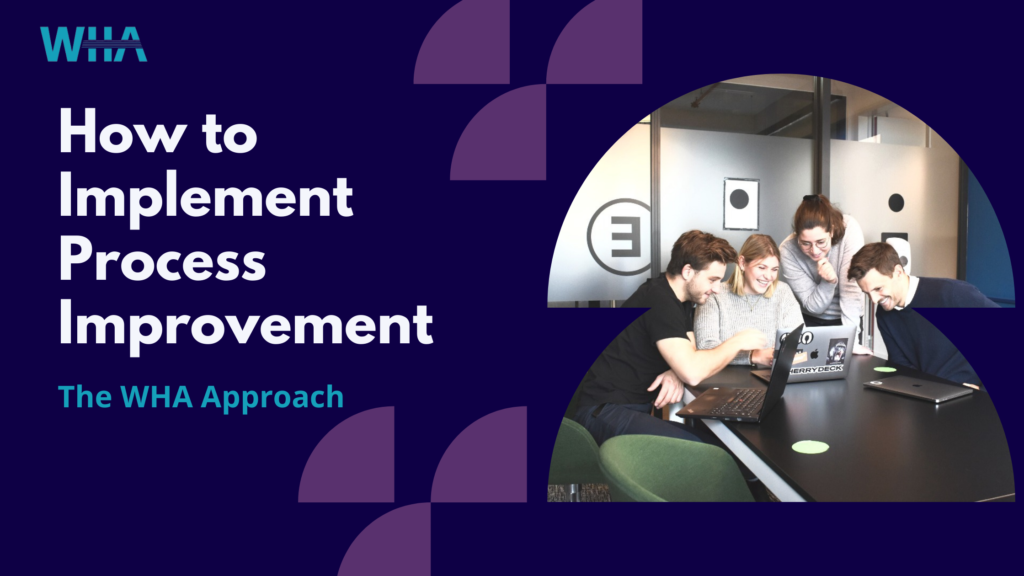When it comes to your organization, company, or enterprise, you will need at some point to implement process improvements to conduct your business successfully. The better you can execute, the more effective your organization will become.
Processes are a part of every company’s operation. Operational performance impacts all parts of every business. From controlling costs to delivery of a product or service to clients.
In turn, this influences the customer experience. It will either lead to repeat business. Or some customers might even resort to talking about the terrible ordeal they might have had. Be it by word of mouth, or on social media.
Process improvement steps
Process improvements can deliver a range of organizational benefits. These can range anywhere from better communications to greatly increased profitability. So, it is important to understand how to install or implement a process improvement plan.
Here are the 6 steps you will need.
Step 1: Identify the Process Improvement Goal
Before starting your process improvement planning, you must first establish a realistic goal. Once defined, you will need to examine your existing workflows related to this goal.
The purpose of this step is to understand the current processes, And at what point do they fail to achieve their objectives?
Step 2: WHA Gap analysis
One very flexible tool to use when a process is failing to take your business to the next level is the Whitehawk Associates gap analysis. This involves an examination of where your business is at this present time. Where you want it to go, and how you can close this gap to get there.
It’s not limited to operational improvements either. You can use this method to confront gaps in product features against the competition. Improving profitability, and even addressing your staff and workforce shortages.
Step 3: Creating a process improvement plan
Mapping process improvements take place at this stage. Bringing together all the information from steps 1 and 2. Now you can use it in conjunction with the whole of your workforce. Give them full unconditional involvement in the implementational process to form your plan.
Determining the changes required to improve a process isn’t the only component of the plan. You, your staff members, and HR must measure the effectiveness of these changes. Checking any risks, and identifying how these will affect the customer experience.
Once a course of action is determined, your previous process mapping can be revised. Now you can lay out the new process, and use it as a tool to create any training materials.
Step 4: Testing out the changes
It’s time to test how the new procedure works in real life. Because changing any given process can increase costs and cause delays in the short term.
As your staff gets up to speed with the changes, it’s best to test the improvements with a few members of your team. You must do this before rolling it out across your organization.
You will also need the staff members and HR who created the new procedure to also test out changes.
Once completed and results are proven, the new process can start to be implemented.
Step 5: Monitoring and optimization
Even after testing, process improvements will need daily monitoring. Especially in the early weeks of a rollout to catch any issues you might have missed during the test phase. This will give you the perfect opportunity to see how the new changes can be further improved.
You should also use the results discovered as a sounding board. Making sure the changes are truly an improvement.
Step 6. Collecting more feedback:
Carry on with collecting feedback from staff members and the workforce. Given that now all process changes are live across the whole of your organization. You’ll have a broader idea of how the implemented process is working.
Be sure to use data analysis in your monitoring and optimization efforts. This allows sharing of all resulting outcomes with your organization and everybody concerned.
Whitehawk Associates Final Advice About Process-Improvements
Once you improve the processes, the reality is that they must be reviewed again and again in the future. Company goals, market forces, and new technologies constantly change. Making established procedures always inefficient and obsolete.
Implement your changes making them a conscious part of your company’s DNA. Plus, keep evolving to stay ahead of the game. This will help you deliver a superior quality of experience. One to all your staff and highly valued customers.

